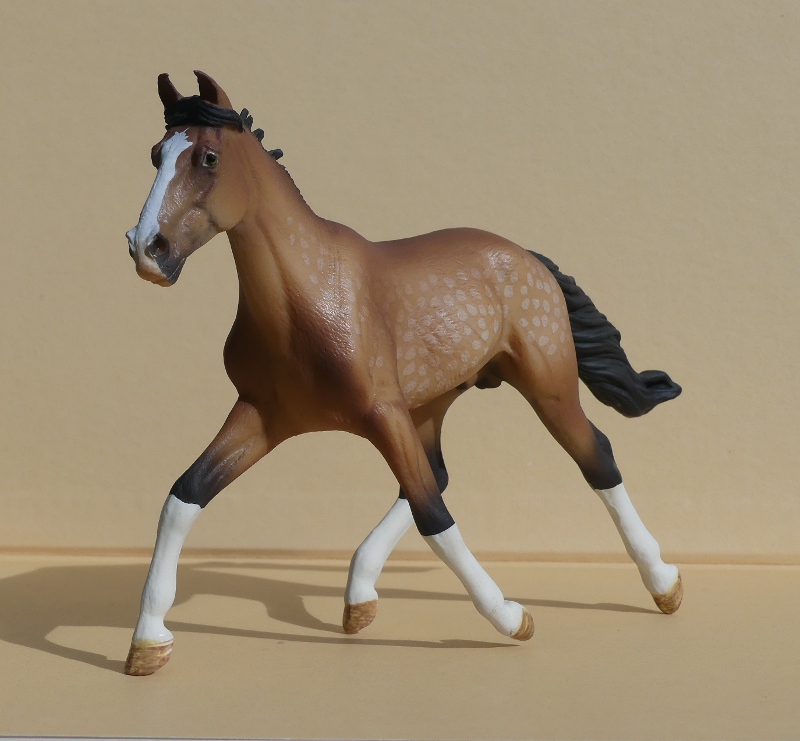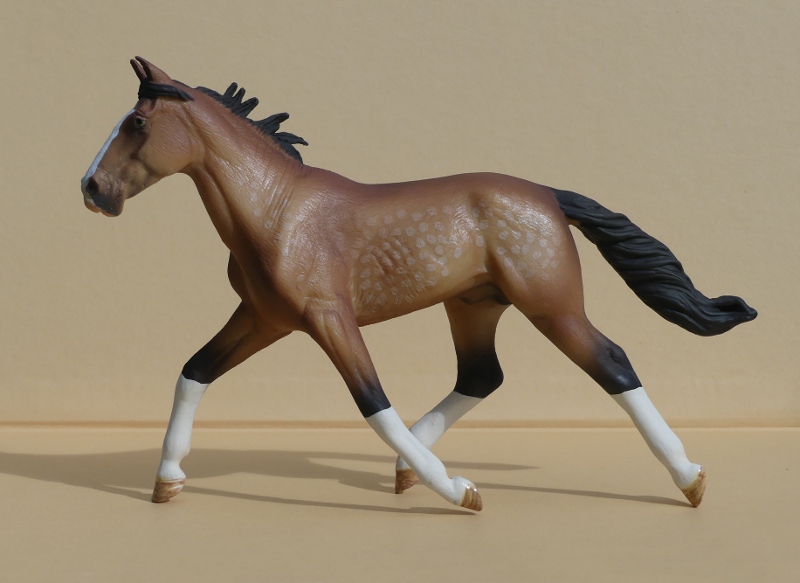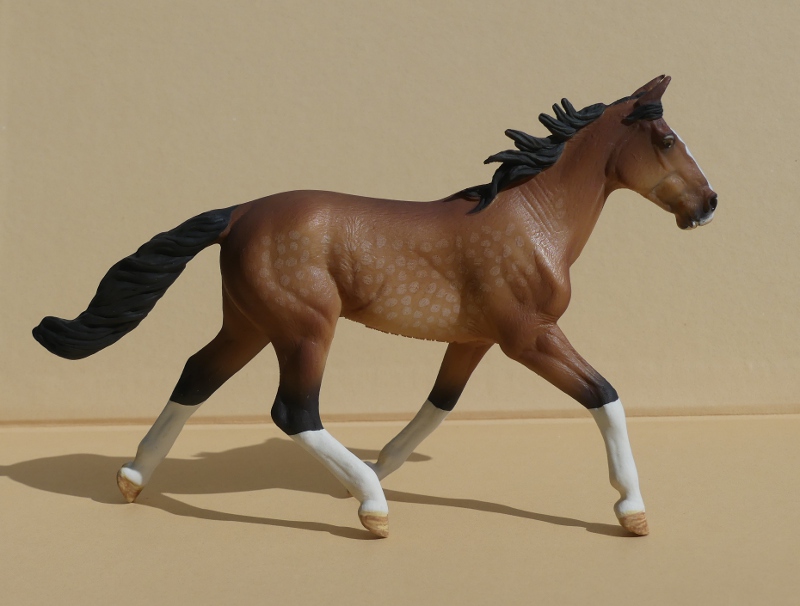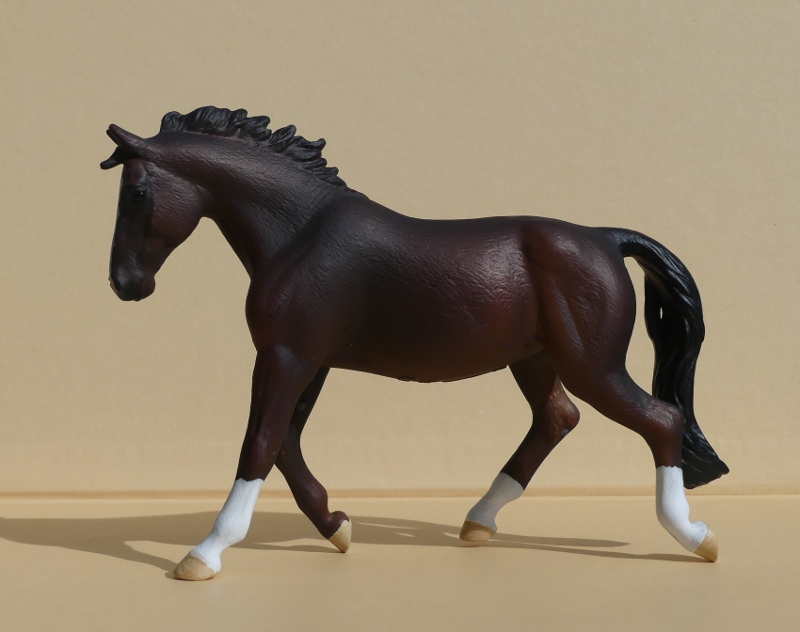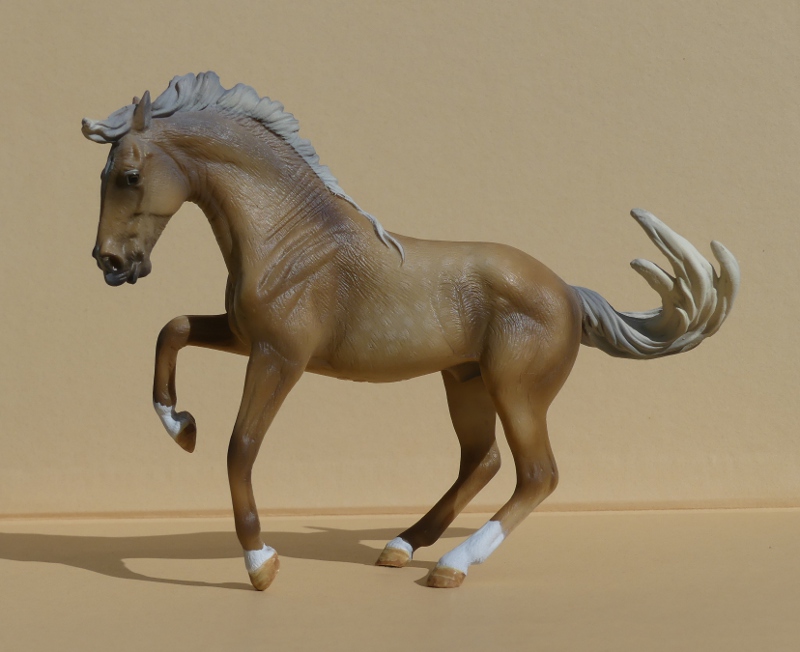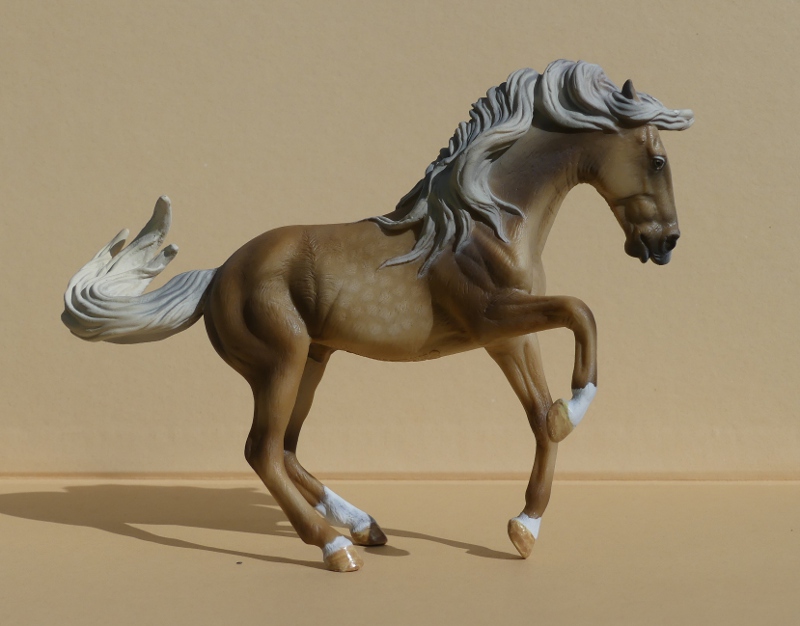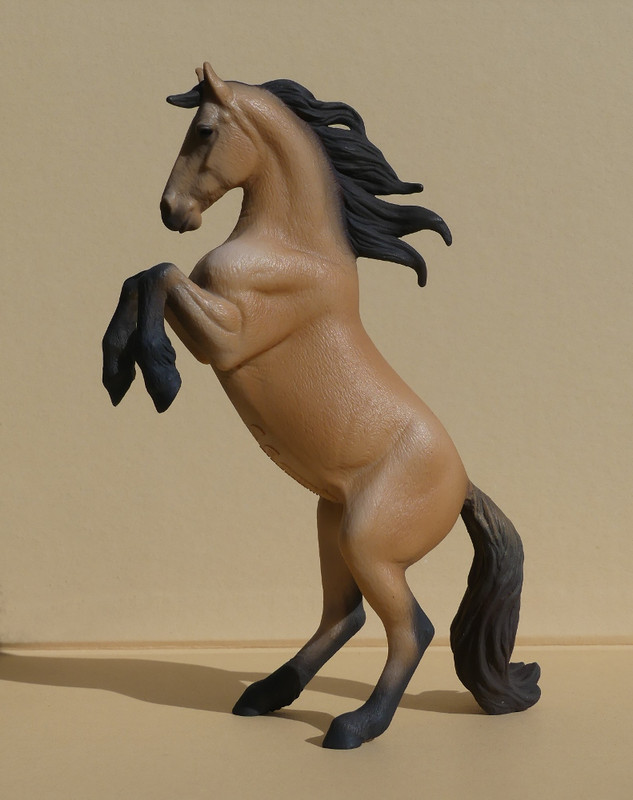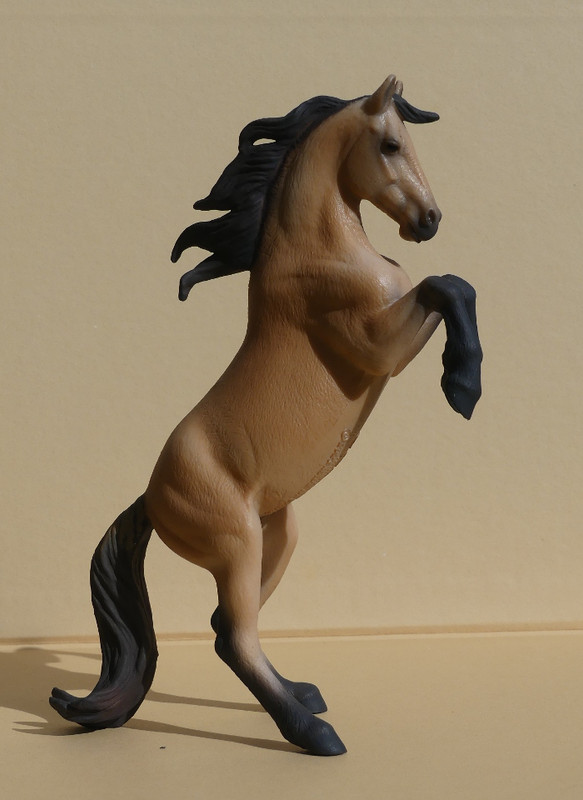I thought I'd start a new thread for the new horse models this year, as I got almost all of them this week. Just the Phar Lap thoroughbred still to go - this year the releases have been split very unevenly, with five now and only one for the autumn. Which means I won't actually get him til
next spring, when the first batch of 2025 models come out (where I buy them, it's free postage when you spend over £30, so I'll never place an order for just one horse!)
OK, here they are...

First, the lovely old Standardbred mould, in a newly designed and much more detailed coat of paint! We've already had this sculpt in black and chestnut, so bay was the logical choice to expand the range, but it's interesting they went for such a light shade with dapples, rather than a basic dark brownish shade without them.
As with all the re-issued older moulds the new colour has exceptional detailing, with really nice shading, eye colour and eye white added in, lovely realistically-varied streaky hooves with a shiny finish, and particularly crisp white markings. I think the face stripe is a stencil/decal application, and the legs have a thick coat of white paint - in fact it's SO thick and even, I wonder if it's achieved by dipping each leg into white paint, rather than applying it with a brush, as there's absolutely no brush marks or areas of poor coverage.

As always in my CollectA reviews, I'm going to praise the legs on this older sculpt! The brand have sadly gone for a chunkier leg on all the newer sculpts (presumably to make them more robust for play, to allow for marketing as a toy not a collector's model), but by re-releasing the older ones in new colours, we get to still enjoy the quality of sculpting with realistic proportions which made so many of us enthusiastic fans of CollectA in the first place!
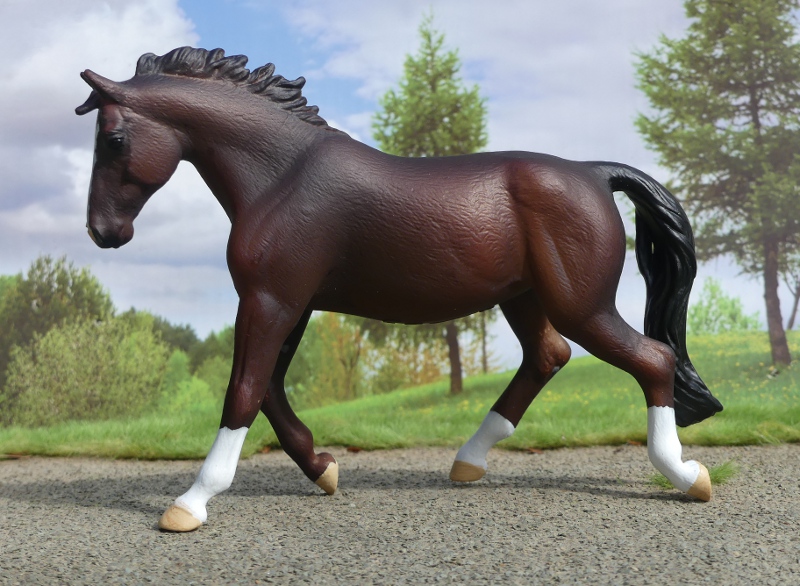
Next, the Oldenburg, a new sculpt but one which actually gets away with the thicker legs, because the breed itself is known for having a thick leg in real life!
'The heaviest of the German warmbloods' says my nearest book to hand, 'legs short with abundant bone' is how they're described - 'bone' being a traditional horseman's term referring to the circumference of the leg bones below the knee, and usually inherited from draft types in the breed's ancestry. The Oldenburg used to be mainly a carriage horse, but nowadays is mostly used for riding, cos of how so many modern horse sports favour a warmblood type, rather than the older more TB-based light riding horse. You see them fairly often in the top level showjumping and dressage competitions, usually abbreviated to
Stud : OLD when the horse/rider details flash up on screen - they're not all bred in one single stud farm, but registered in the same stud
book for recording the pedigrees of the entire breed.

She's a nice little model, with a good level of detail and a focused, alert expression - my only negative would be that she's perhaps on the small side for such a big warmblood breed, if scale between models matters to you for group scenes, shared props, etc. she may look undersized compared to other CollectAs. Although the Holstein from last year had the exact same scaling issue - he was also a tall warmblood breed made into a smallish model, so maybe you could have him and the Oldenburg in the same photo/scene and they'd be a perfect match!
One thing I did notice, which doesn't really show in the photos : unlike a lot of models where the tail hangs close to the leg, it is sculpted to be separate, with a little gap left between them. I'm not sure whether that makes casting easier, as there's no cut-out hole to deal with, or more difficult cos the mould has to be constructed with the complex 3d overlap and small space between!

Now, one I was biased to like - a new Lusitano, but in the same colour as my real pony! I remember reading someone say it didn't look like a very accurate sooty palomino, but it's a huuugely varied colour in real life - just think of the range of shades a normal palomino comes in, from creamy to golden to resembling a gingery flaxen chestnut, then add in the varying intensity of the sooty effect on top of that, and you can kind of understand the infinite variety of shades you can end up with. Also, they can be immensely changeable from winter to summer - in fact, let me grab a couple of opposite pictures!

Taken in March, with her winter colour fluff still on

Taken in July, with her sleek summer coat
I think that proves my point quite beautifully (I don't secretly own two different shetland ponies, they're honestly both my Bonnie Bunny

)
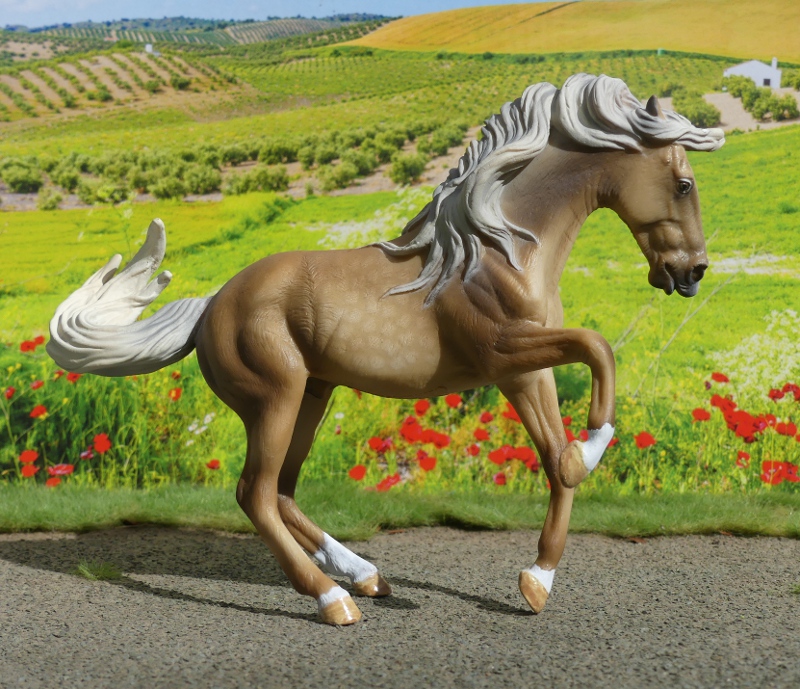
The CollectA Lusitano is one of those models where I wish the mane was on the other side of the neck! It's so big and dramatic with the sculpted swish to show movement, but then it's hidden over on the side which doesn't photograph so well when you're trying to show off the horse's pose to the best advantage - any moulds where the head is turned to one side, always display/photograph better when that head-turn is toward you, rather than away. So it's tricky to get a shot of this side without him looking away from the camera - this angle is the best I could do!

The next horse is a crossbreed, Andalusian crossed with Friesian. CollectA are using the breed name 'Warlander', which is just one person's made up term for this cross, like a marketing name, rather than anything traditional and widespread with a long-term basis in history. I tend not to like using these names for crossbred horses - it's a bit like the whole trend to call a crossbred dog an amalgam of both breeds, like cockerpoo or dach-russel or pomsky - there's nothing wrong with just listing both halves, rather than having to invent a word for it. So I'm just going to file mine in my 'partbred Friesian' section, and not make a whole new page for the Warlander name.
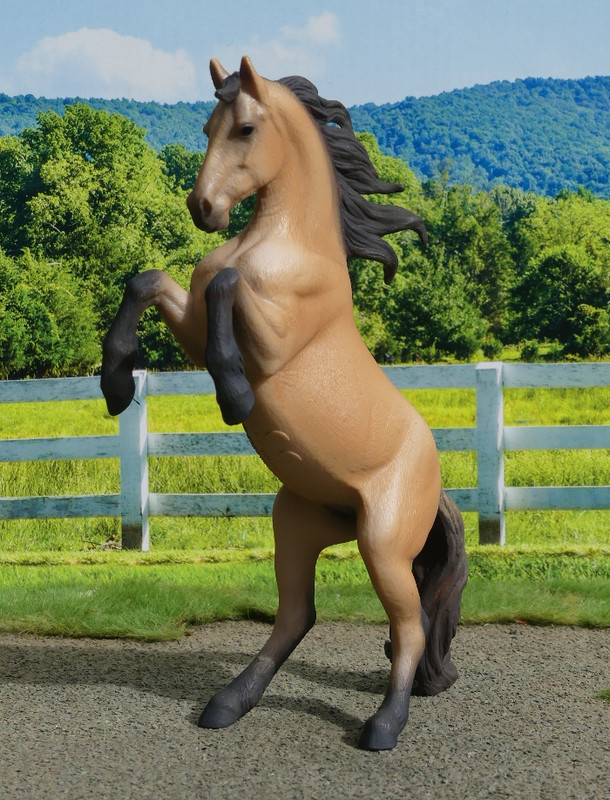
Despite not being keen on the name allocation, it's a really nice model, with a handsome head and a beautifully balanced rearing pose - the tail seems to rest quite lightly on the floor, rather than being a big block of plastic sitting heavily as counterbalance.
Many of the rearing models are stallions, so it makes a nice change for them to decide this one should be a mare instead. I'm pondering (probably over-thinking!) the exact nature of this rear - she's not fighting or looking aggressive with it, even a play-fighting horse will usually have the ears turned back, it's as if the expression goes automatically with the action when directed at another horse, whether they're fighting seriously or just to tease each other. My horse does a wonderfully enthusiastic rear or two, followed by bouncing around with several bucks in a row, and ending with a lap or two of running AT me, and sometimes her ears are laid back like she's acting out being a furious dangerous wild creature, and sometimes they're not. She just does it for fun, when she's in an energetic or weird-welsh mood, hah.
There's also the possibility that rather than a fight/playfight/exuberance rear, it's meant as a trained trick the horse is being asked to do, either ridden, or in a liberty performance. That last option would explain the pricked-forward ears very well, the focus being on the trainer on the ground. Who knows what was in the sculptor's mind at the time (unless she was actually
asked for a 'rearing but don't make it look angry' sculpt!)

The other side, the shadows are bad from this direction but it's one of those poses which photographs equally well from either side, if you take more time with angling for the light than I did!

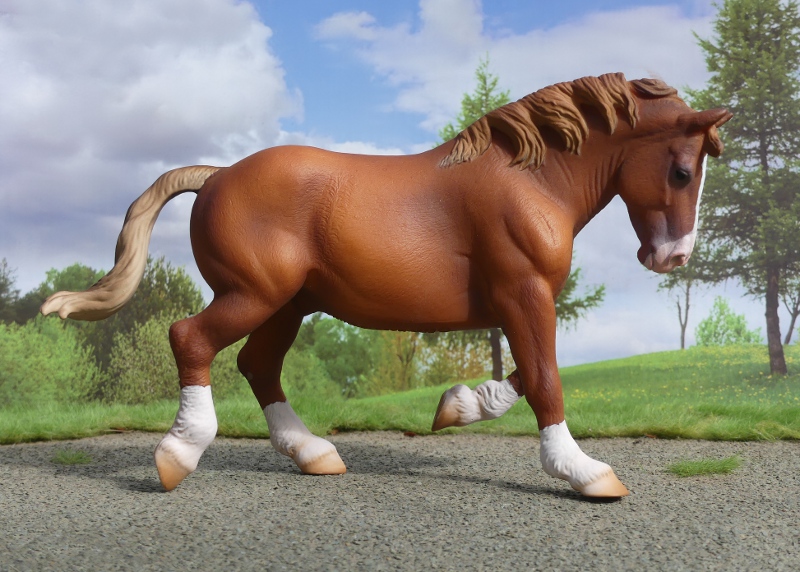
Finally the Breton stallion, he is a BIG chunky boy! His colour is great, a really rich reddish tone to the chestnut with a very nicely shaded mane and tail, crisp markings on the legs, and a softly blended muzzle where the peachy-velvet skin on a real horse's face tends to blur the edges of the marking to fuzziness in real life too. It's a pity he doesn't have the detailed eyes of the Standardbred and Lusitano, but I think that is the way they're done these days - re-releases of old moulds in new colours get the three-colour eye painting, releases on brand new moulds get a solid gloss black eye instead. Shame

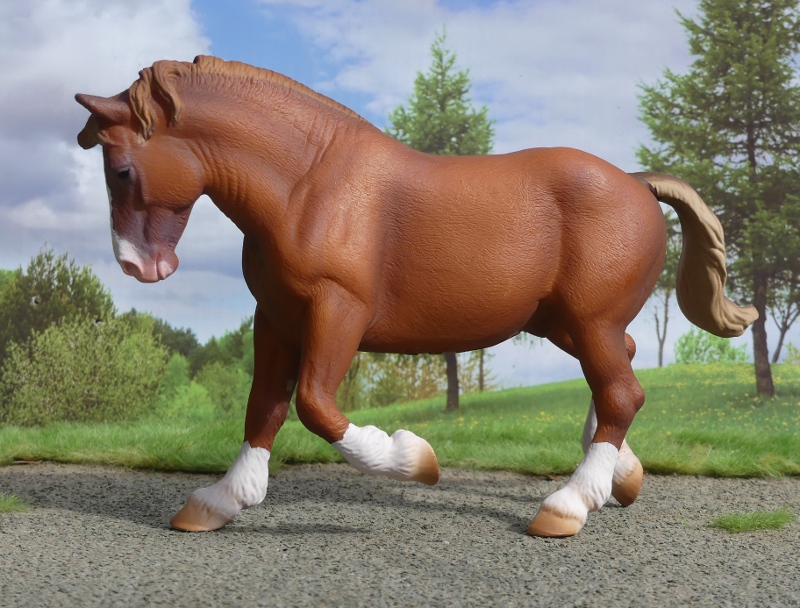
His proportions are pretty good for the breed, when I first unwrapped him I thought his legs looked too short for the depth of his body, but having looked at a lot of photos of the draft-type breton horse online, it's actually quite common for them to measure slightly further from the shoulder to the bottom line of the belly, than from belly to ground!
Here's one example who definitely has more body than legs

I remember someone on here asking for comparison pics of the Breton with the Percheron (maybe
@Kikimalou, as they're French breeds?), no idea if anyone else already supplied the photos or even if you bought the model by now, but I took a few of them together - hope they're helpful :)
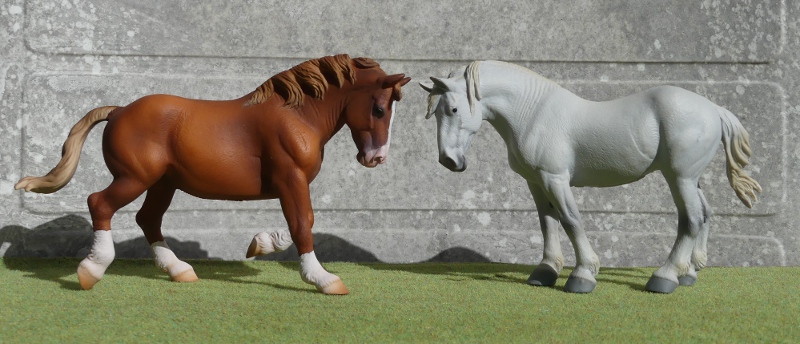
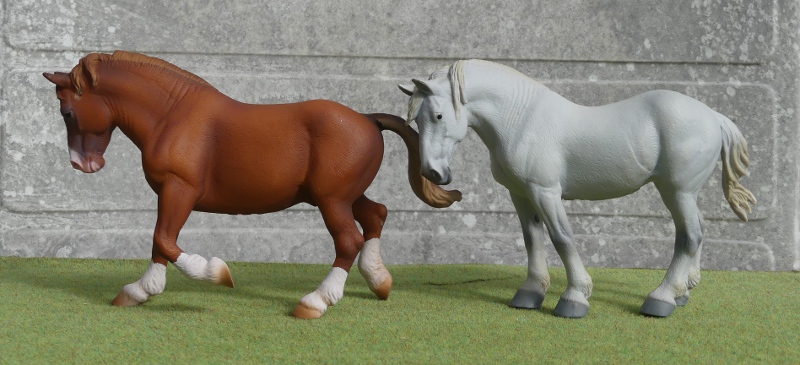


And finally, some plain background pics for Toy Animal Wiki - again, not sure which of these are actually
needed and which you already have on the site from someone else, but I had all the horses outside in one go so I just took photos of the whole lot - help yourself to any you don't have on TAW already



